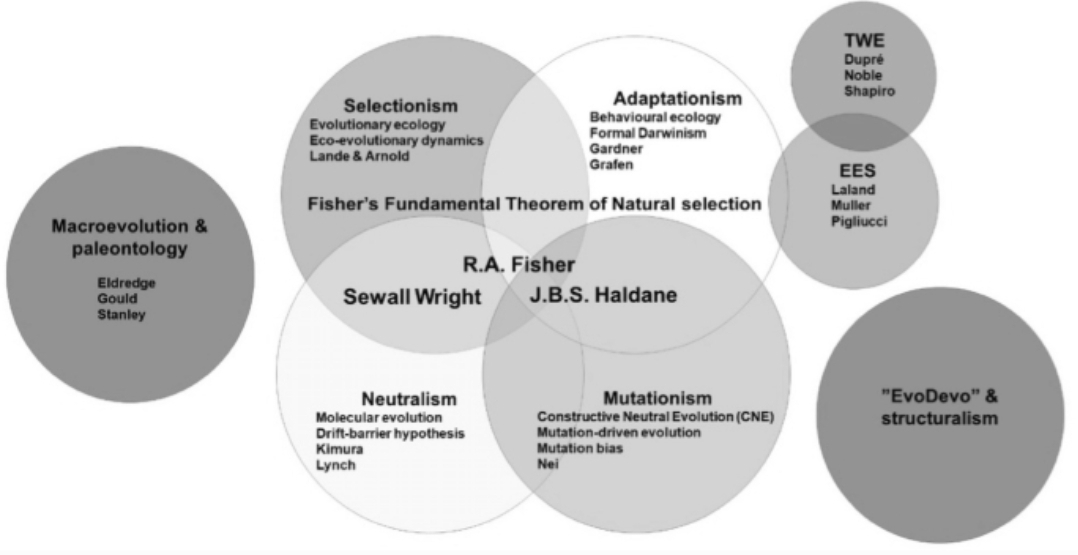Beyond Random Mutations and Natural Selection: The Extended Evolutionary Synthesis
The traditional view of evolution, often called the Modern Synthesis, focuses primarily on random mutations and natural selection as the driving forces of change. While this framework has been successful in explaining aspects of life's diversity, it has also shown limitations in accounting for certain phenomena. The Extended Evolutionary Synthesis (EES) offers a broader perspective, incorporating additional mechanisms and factors that contribute to evolutionary change.
Here's a look at how the EES moves beyond the traditional model:
1. Inclusive Inheritance: The EES challenges the gene-centric view of inheritance by recognizing that inheritance extends beyond DNA sequences. It acknowledges the role of epigenetic modifications, parental effects, ecological legacies, and cultural transmission in shaping traits and evolutionary trajectories. For instance:
Epigenetics: Chemical modifications to DNA or associated proteins can alter gene expression patterns and be passed down through generations, influencing traits without changes in the DNA sequence itself.
Niche Construction: Organisms actively modify their environments, creating new selection pressures for themselves and other species. This can lead to feedback loops where organisms influence their own evolution.
2. Developmental Bias: The EES emphasizes the role of development in shaping evolutionary outcomes. It recognizes that developmental processes can bias the production of variation, making certain phenotypes more likely to arise than others. This means that not all variations are equally probable, and development can influence the direction of evolutionary change. For example:
Developmental Constraints: Certain developmental pathways may restrict the types of variations that can arise, limiting the scope of evolutionary possibilities.
Facilitated Variation: Developmental systems can also facilitate the production of adaptive variations, increasing the likelihood of certain evolutionary changes.
3. Reciprocal Causation: The EES moves away from a linear view of evolution where genes determine traits and the environment selects for them. Instead, it emphasizes reciprocal causation, where genes, development, and the environment interact and influence each other. This means that:
Organisms are not passive recipients of selection pressures. They actively shape their environments and developmental trajectories, influencing their own evolution.
Evolution is not just about adapting to a pre-existing environment. It's also about constructing new environments and generating new adaptations.
4. Expanded View of Selection: The EES recognizes additional processes that can contribute to evolutionary change, such as:
Developmental Selection: Selection acting on developmental processes can shape the production of variation and influence evolutionary trajectories.
Niche Construction: By modifying their environments, organisms can create new selection pressures that drive evolutionary change.
Cultural Evolution: In species with social learning, cultural transmission can lead to the rapid spread of new behaviors and innovations, influencing evolutionary outcomes.
5. Multilevel Inheritance: The EES recognizes that inheritance can occur at multiple levels, from genes to cells to organisms to populations. This means that evolutionary change can be driven by changes at any of these levels. For example:
Group Selection: Selection can act on groups of organisms, favoring traits that benefit the group as a whole, even if they are detrimental to individual fitness.
Species Selection: Selection can also act on entire species, favoring those with traits that promote speciation or reduce extinction risk.
In summary, the Extended Evolutionary Synthesis offers a more nuanced and comprehensive view of evolution by:
Moving beyond a gene-centric perspective: Recognizing the role of multiple inheritance systems and developmental processes.
Emphasizing reciprocal causation: Acknowledging the active role of organisms in shaping their environments and evolutionary trajectories.
Expanding the view of selection: Incorporating additional processes that can contribute to evolutionary change.
Recognizing multilevel inheritance: Understanding that evolutionary change can be driven by changes at various levels of biological organization.
By incorporating these additional factors, the EES provides a more complete understanding of the complexity of evolutionary processes and helps to explain phenomena that are not fully accounted for by the traditional model. It offers a richer and more dynamic view of life's history, highlighting the interplay between genes, development, and the environment in shaping the diversity of life on Earth.





Comments
Post a Comment